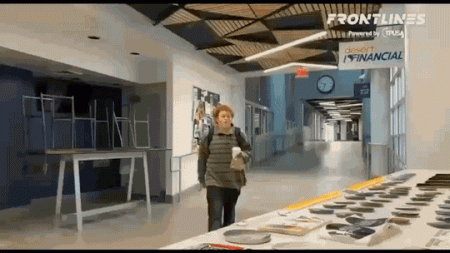Major Technical Outage Disrupts Immigration Systems at Canada’s Busiest Airports
System Failure Leaves Thousands of Travelers in Limbo as Immigration Kiosks Go Dark
A widespread technical failure affecting immigration inspection kiosks brought operations to a standstill at three of Canada’s busiest international airports on Friday, creating significant delays for travelers and forcing some to remain aboard aircraft long after landing. The outage, which impacted terminals in Montreal, Toronto, and Calgary, represents one of the most significant disruptions to Canada’s border entry systems in recent years and highlights the vulnerability of increasingly digitized immigration processes.
At Toronto Pearson International Airport, Canada’s largest aviation hub handling nearly 50 million passengers annually, travelers described scenes of mounting frustration as the automated border clearance systems that typically process thousands of arrivals per hour suddenly went offline during one of the busiest travel periods of the week. “We landed at 3:45 PM and sat on the tarmac for almost two hours,” said Rachel Goldstein, who was returning from London with her family. “The pilot announced there was some kind of system-wide problem with immigration processing, and they couldn’t let us deplane because the terminals were already overcrowded.” Similar accounts emerged from Montreal-Trudeau International Airport and Calgary International Airport, where passengers reported being held on aircraft or facing extraordinary wait times in terminal buildings as border officials scrambled to implement contingency measures.
Border Services Agency Implements Manual Processing as Tech Teams Scramble for Solution
The Canada Border Services Agency (CBSA) confirmed the outage affected their Primary Inspection Kiosks (PIKs), the self-service terminals that have become the standard first point of contact for international travelers entering Canada. These sophisticated systems capture traveler information, photographs, and declarations while performing initial security screening—processing that would otherwise require significantly more time and personnel. “Our technical teams identified a network infrastructure issue affecting our automated border processing systems at approximately 2:30 PM Eastern Time,” said CBSA spokesperson Marc Girard in a statement released Friday evening. “We immediately deployed our contingency protocols, which include reverting to manual processing methods.” The agency mobilized all available border services officers to process travelers using traditional methods, but the manual approach proved insufficient to handle the volume of arrivals typical for major international airports on a Friday afternoon.
Immigration experts note that this incident underscores the double-edged nature of technology in border management. “Canada has been at the forefront of automating border processes, which has generally improved efficiency and security,” explained Dr. Amina Chowdhury, Director of Border Management Studies at the University of Toronto. “But when these systems fail, we see a dramatic bottleneck effect because staffing models and facility designs are now optimized around automated processing. The redundancy that existed in fully staffed border halls has largely been eliminated.” Indeed, modern terminal designs at all three affected airports have been reconfigured in recent years to accommodate more kiosks and fewer traditional inspection booths, creating physical limitations when reverting to manual systems.
Passengers Report Extended Delays and Communication Challenges as Airlines Adjust Operations
The ripple effects of the immigration system failure quickly spread throughout the aviation network, with arriving international flights unable to offload passengers while departing flights faced crew shortages as team members remained stuck in immigration queues. Air Canada, WestJet, and several international carriers were forced to delay or cancel subsequent departures as the situation deteriorated throughout the evening. “We’ve had to make the difficult decision to cancel eight international departures from Toronto and four from Montreal due to crew availability issues stemming from the immigration systems outage,” confirmed Air Canada spokesperson Christine Reynolds. “Our teams are working to accommodate affected passengers on alternative flights over the coming days.”
Many travelers expressed frustration not only with the delays but also with what they described as inadequate communication during the crisis. “The most stressful part was the lack of clear information,” said Miguel Sanchez, who was connecting through Toronto en route to Vancouver from Mexico City. “We sat on the plane for almost three hours with vague updates every 30 minutes. People were getting anxious, children were crying, and several passengers with medical needs were clearly uncomfortable.” Airport authorities acknowledged the communication challenges, with Calgary Airport Authority CEO Bob Sartor stating: “This situation highlighted areas where we need to improve our passenger communication protocols during technical disruptions. While our front-line staff worked tirelessly to assist travelers, we recognize that more consistent and detailed information should have been provided across all channels.”
Technical Issues Resolved After Six Hours, But Backlog Will Take Days to Clear
The technical teams from the CBSA and Shared Services Canada, the federal IT agency responsible for government systems, managed to restore functionality to the immigration kiosks shortly after 8:30 PM Eastern Time, approximately six hours after the initial outage was detected. However, the backlog of passengers requiring processing had grown to unprecedented levels at all three airports. “Even with systems back online, we’re looking at a recovery period that will extend through the weekend,” said Toronto Pearson Airport CEO Deborah Flint during a late-evening press briefing. “We expect residual delays for the next 36 to 48 hours as we work through the accumulated passenger volume and address displaced aircraft and crew positions.”
The immigration system failure comes at a particularly challenging time for Canadian airports, which have faced scrutiny over passenger experience issues since the post-pandemic travel resurgence began. A parliamentary transportation committee report released just last month highlighted concerns about infrastructure readiness and technological resilience at Canada’s major international gateways. “Today’s events unfortunately validate many of the concerns raised in our recent assessment,” noted Committee Chair James Williams. “As passenger volumes continue to grow and border processes become increasingly technology-dependent, we must ensure robust redundancy systems are in place.” The CBSA has promised a thorough investigation into the root cause of the outage, with preliminary findings expected to be shared with transport and border security stakeholders next week. For thousands of affected travelers, however, the immediate focus remains on reaching their final destinations after an unexpectedly extended journey through Canada’s temporarily overwhelmed immigration system.
Long-Term Implications for Canada’s Border Technology Strategy
This significant disruption raises important questions about the future of border management technology in Canada and similar systems worldwide. The CBSA has invested heavily in its border modernization program over the past decade, implementing biometric verification, automated declaration processes, and integrated security screening. While these innovations have generally improved processing times and security outcomes during normal operations, Friday’s incident demonstrates the vulnerability inherent in centralized digital systems. “We need to seriously examine the architecture of our border management technology,” said former CBSA Commissioner Eleanor Thompson, who now serves as a security consultant. “Distributed systems with greater regional autonomy might sacrifice some efficiency but could provide crucial resilience during network or infrastructure failures.”
Industry analysts also point to potential lessons for other countries implementing similar border technologies. “Canada’s experience should serve as a case study for border agencies globally,” said Richard Mendelson, senior technology analyst at Global Border Security Review. “The trend toward fully automated border processing is unlikely to reverse, but this incident highlights the critical importance of robust fallback systems and staff training for manual operations.” As Canada’s airports gradually return to normal operations in the coming days, the conversation is already shifting toward preventing similar disruptions in the future. With international passenger traffic projected to grow significantly over the next decade and border agencies under pressure to maintain both security and efficiency, finding the right balance between technological advancement and operational resilience remains a critical challenge for Canada’s immigration system and border agencies worldwide.










